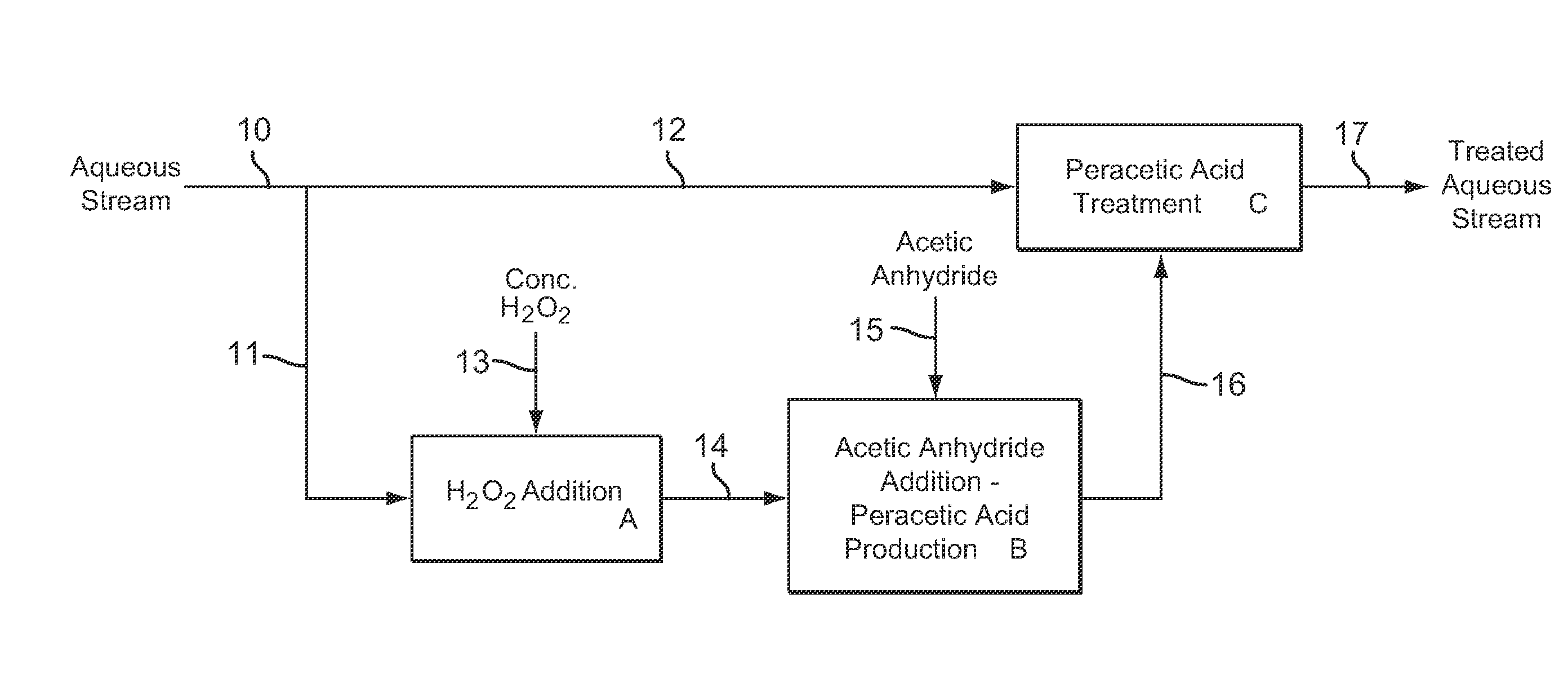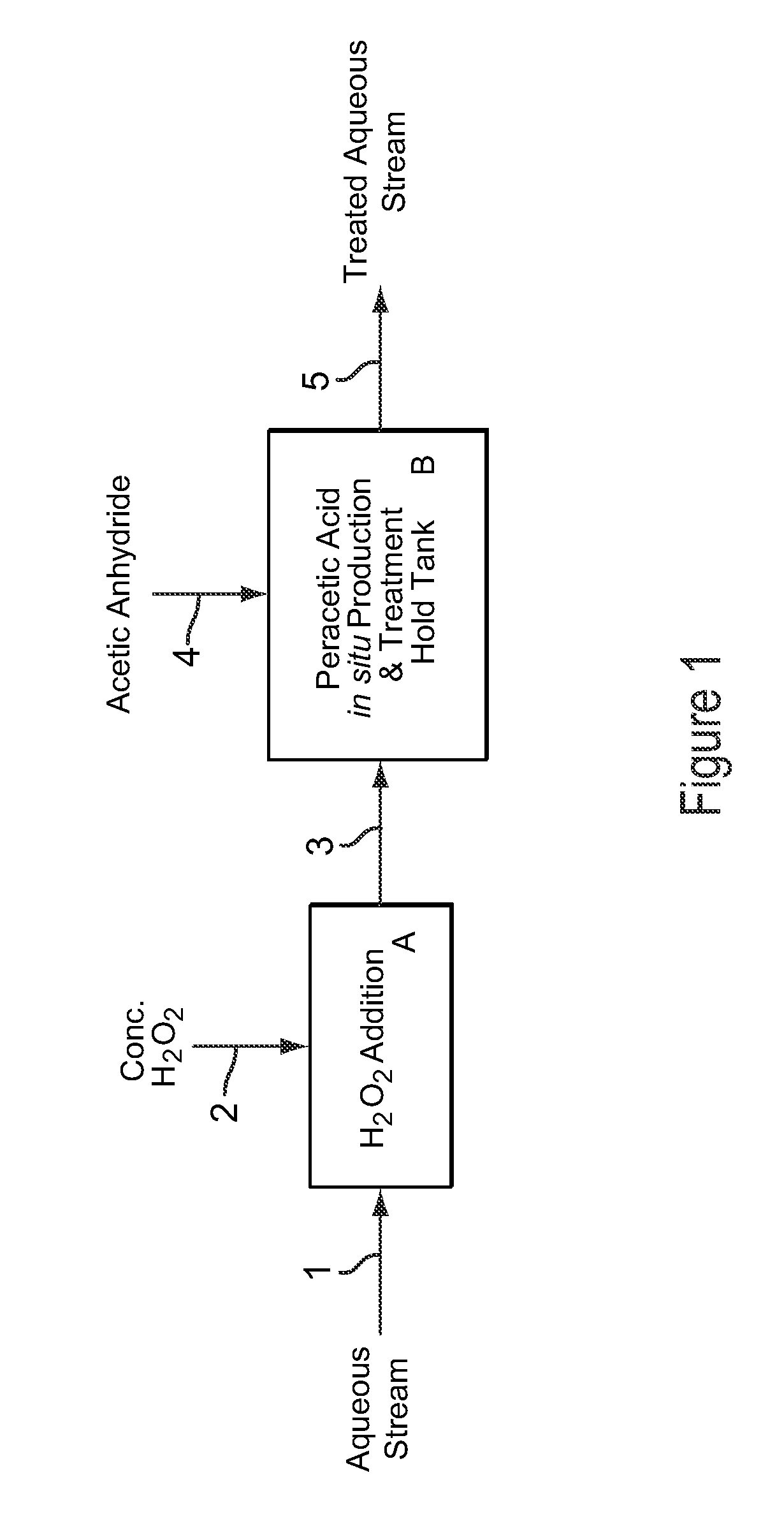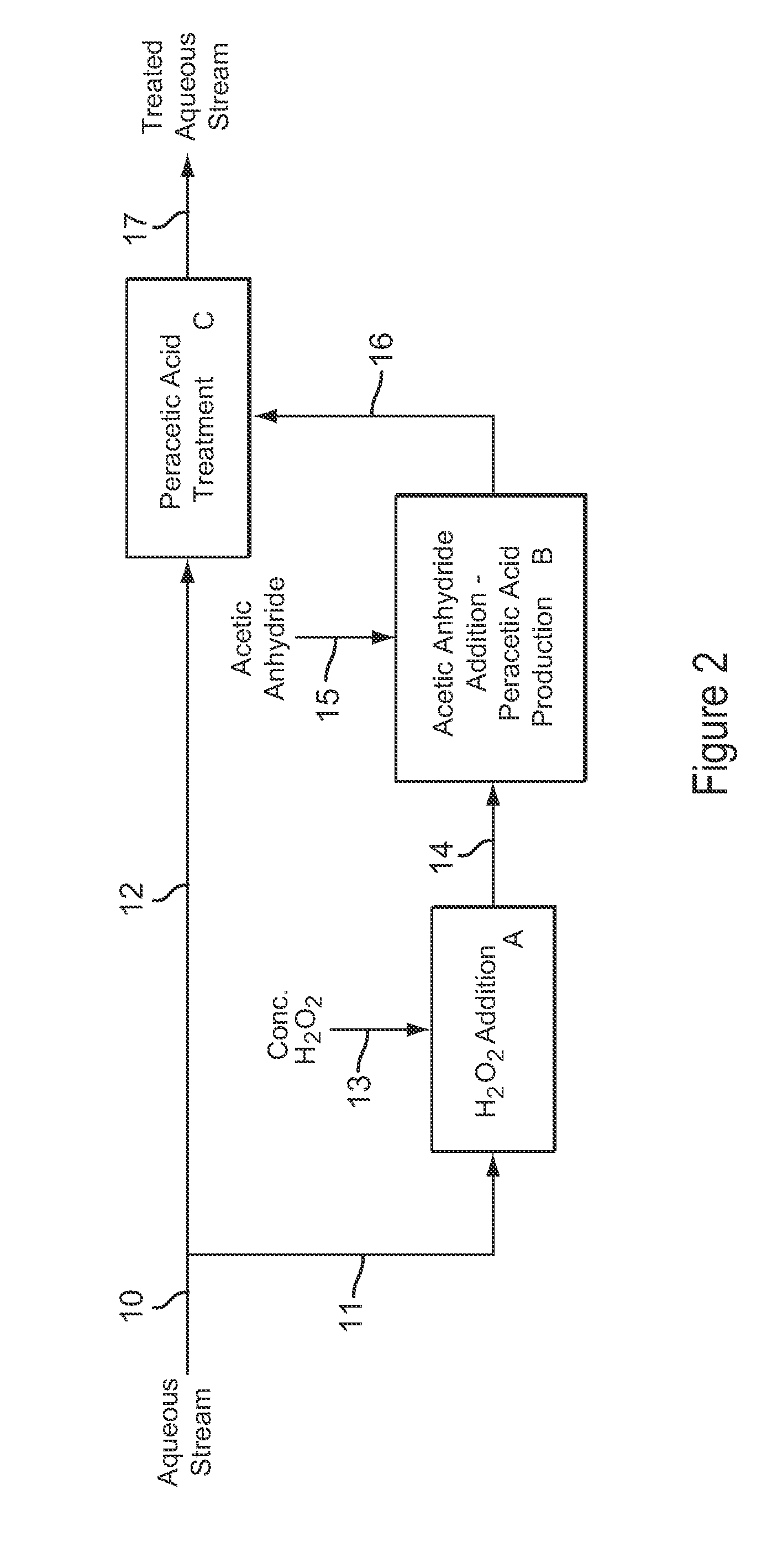Dilute Stabilized Peracetic Acid Production and Treatment Process
- Summary
- Abstract
- Description
- Claims
- Application Information
AI Technical Summary
Benefits of technology
Problems solved by technology
Method used
Image
Examples
example 1
[0092]In Example 1, an experimental study was carried out in laboratory-scale equipment to demonstrate the effect of reaction mixture pH on the formation of peracetic acid from the reaction of acetic anhydride and hydrogen peroxide in an aqueous medium.
[0093]The mole ratio of hydrogen peroxide to acetic anhydride used in this Example 1 was 5.7 moles H2O2 per mole of acetic anhydride, a mole ratio that provided a large stoichiometric excess of hydrogen peroxide. Three pH values were used: 10.0, 6.8 and 4.5. The aqueous medium in each study was appropriately buffered to maintain the specific pH value throughout the duration of the run.
[0094]In each of the three runs, the operating procedure was as follows. A dilute aqueous buffered hydrogen peroxide solution, containing 585 ppm H2O2, was prepared and maintained at a temperature of 25° C. No hydrogen peroxide stabilizers were added to the solution. Acetic anhydride, undiluted (i.e., 100%) and in an amount sufficient to provide the desi...
example 2
[0101]In Example 2, another experimental study was carried out in laboratory-scale equipment to demonstrate the effect of the mole ratio of the hydrogen peroxide and acetic anhydride reactants on the formation of peracetic acid in an aqueous medium maintained at a single pH value, 6.8.
[0102]Three mole ratios of hydrogen peroxide to acetic anhydride were used in this Example 2: 5.7, 2.0 and 1.2 moles H2O2 per mole of acetic anhydride, all of which provided a stoichiometric excess of hydrogen peroxide. The aqueous medium in each study was appropriately buffered with a mixture of Na2HPO4 / NaH2PO4 to maintain the pH value at 6.8 for the duration of the run.
[0103]In each of the three runs, the operating procedure was similar to that of Example 1 and was as follows. A dilute aqueous buffered hydrogen peroxide solution, containing respectively 585 ppm, 205 ppm, or 123 ppm H2O2 for the three mole ratios (5.7:1, 2.0:1 or 1.2:1 H2O2:acetic anhydride) was prepared and maintained at a temperatur...
example 3
[0108]Example 3 is a first preferred embodiment of the invention involving the production of dilute peracetic acid in the aqueous stream being treated, in an in situ production and treatment method, as is shown in the schematic flow diagram of FIG. 1. Referring now to FIG. 1, an aqueous waste water stream 1 from a food processing plant is treated with dilute peracetic acid that is produced directly in the aqueous stream, as follows. The aqueous waste water stream 1 is at a temperature of about 25° C. and has a pH value of about 7. The aqueous waste water stream 1 contains bacterial contaminants, and the stream 1 is treated with dilute peracetic acid, at a concentration of about 400-500 ppm, produced in situ for bactericidal treatment.
[0109]In FIG. 1, peracetic acid is produced in situ in the operations depicted by blocks A and B. Block A represents an inline mixer in which concentrated hydrogen peroxide 2, at 35 wt % H2O2, is metered into the aqueous stream 1 in an amount sufficient...
PUM
 Login to View More
Login to View More Abstract
Description
Claims
Application Information
 Login to View More
Login to View More - R&D
- Intellectual Property
- Life Sciences
- Materials
- Tech Scout
- Unparalleled Data Quality
- Higher Quality Content
- 60% Fewer Hallucinations
Browse by: Latest US Patents, China's latest patents, Technical Efficacy Thesaurus, Application Domain, Technology Topic, Popular Technical Reports.
© 2025 PatSnap. All rights reserved.Legal|Privacy policy|Modern Slavery Act Transparency Statement|Sitemap|About US| Contact US: help@patsnap.com



